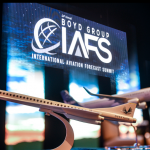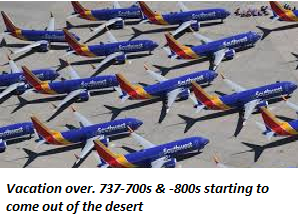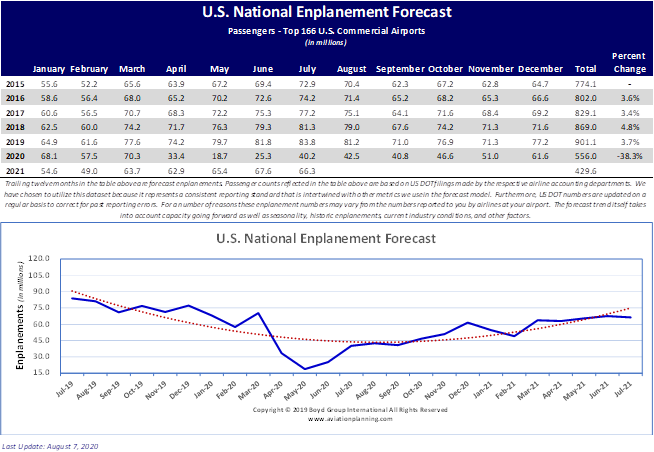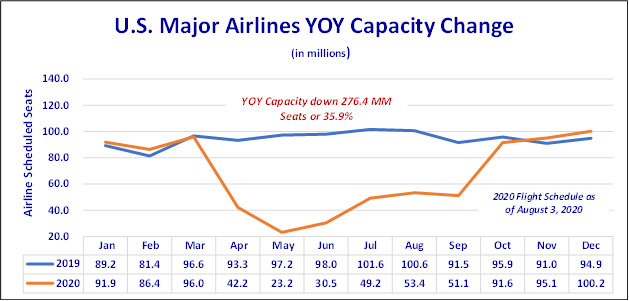Announcing…
 Airport Success Planning In The New Environment
Airport Success Planning In The New Environment
From Boyd Group International
Here’s a not so subtle fact or two…
- Between 2021 and 2025, US airports will see 1.5 billion fewer enplanements than what was expected before the CCP-Covid pandemic.
- The US airline industry will shrink in scope and fleets… today over one third of airliners are either parked or enormously under-utilized.
- Changes in fleet mix with new airliner types will result in different airline market strategies.
- Airline route and market planning will be based on different metrics and corporate strategies.
One thing is clear – the entire air transportation system has changed permanently. The CCP-Covid pandemic has shifted travel patterns in the economy, and has engendered material and structural changes in the entire airline industry.
Past metrics and past approaches to airport strategic planning no longer apply… airports must understand and adjust to a whole new air service environment in order to remain connected to the global economy.
That “true market study” reflects an airline system that no longer exists. That “leakage” analysis does not fit the new airline structure – or the new consumer demand trends.
The airline industry is now re-emerging, and bank on it – airports and communities need to get a clear picture of the new air transportation system to craft the programs necessary to assure maximizing air access in the new global future. Past data and past mechanisms to retain air service are just that – past.
Traditional approaches won’t apply, because the airline industry is operating on whole new metrics.
Announcing our exclusive Runway To The Future Program. It is based on this new emerging airline system. The forecast expertise of Boyd Group International will deliver a clear understanding of future consumer and airline shifts and how they impact your air service future and your airport.
Think about it – almost 1.5 billion fewer enplanements over the next five years… what effects will that have on revenues? On facility needs? On consumer patterns? Anticipating and planning is far superior to reacting to these factors.
Here’s the approach…
Runway to The Future combines a clear forecast of the emerging air transportation dynamics as they will affect your airport. This is based on Boyd Group International’s unrivaled expertise in identifying new aviation trends.
We start by imparting a clear and concise picture of the new structure of the U.S. airline industry, and then relate it to what you can expect in the future. No sugar-coating. Just the hard facts – and some will be quite positive, by the way, particularly in the area of new fleet mixes. Others will represent challenging shifts in future projections.
Section One: National Airline Trend Scenarios
The airline industry is re-structuring, driven both by consumer pattern shifts as well as due to the extensive damage done to balance sheets caused by the CCP-Covid pandemic. It’s important that your community understand the new environment and how airlines will evolve in the future
Section Two: Emerging Local Air Service Trends v Historical
Put that pre-Covid market study back on the shelf – or into the round file. It’s all about an air transportation system that no longer exists.
This is where the landing gear meets the runway. Our Runway To The Future program candidly reviews the historical trends at your airport, and relates them to what is forecast to take place in the new environment. We’ll relate current shifts in air service due to airline strategy changes, and candidly discuss how they will affect your community
Section Three: Trend Analyses & Forecast Scenarios – Short-term & Long Term
Boyd Group International is the leader in airport forecasting. Our Airports:USA® program relates all aspects of air traffic generation. The Runway To The Future program will deliver a near-term forecast – month-by-month, out one year – to gain an understanding of what can be expected as the airline industry restructures. The long-term traffic and trend forecasts what is expected over the four years beyond the short-term projections, and will discuss known and expected strategic scenarios.
We bring to bear our industry leading expertise in traffic, trend and fleet forecasts. This includes our Airports:USA forecasts – published since 1992 – and our Global Fleet Trend forecasts. These are relied upon in our global aviation projects.
We’d note that at the International Aviation Forecast Summit this month, BGI’s ten year fleet demand forecast was within 2.5% of Boeing’s. This is representative of forecast depth unrivaled by any other consulting firm, and is indicative of all our forecast activities.
Section Four: Strategic Blueprint
From these data, Boyd Group International will assist in developing and crafting your airport’s comprehensive strategic and tactical air access program. We will discuss each incumbent and potential airline within the real context of the future.
No other source can deliver this level of forecast expertise – which will cut through the hype and deliver hard facts and projections which are critical to airport planning in the new environment.
Section Five: Community Update Presentations
The Runway To The Future Program includes the delivery of a comprehensive community presentation that will outline the findings and forecasts of the project.
The format can be on-site or be provided electronically, for up to 100 attendees, and allowing robust interaction and Q&A. The goal is to bring to the fore what the community can expect in the near term and how individuals can rally behind the airport in these tough times as well as in the future.
A Complete Future Vision For Your Airport – Based Professional Analyses
The Runway To The Future Program includes comprehensive data and analyses that will give an independent perspective from the leader in aviation trend forecasting – Boyd Group International.
Don’t wait… the future is now different… Your planning needs to be so, also.
Click here to get the discussion started. Or give us a call at 303 674 2000. We’re ready.
__________________________________






